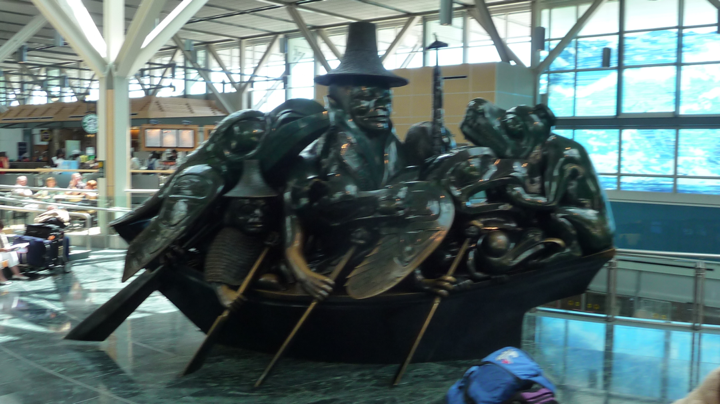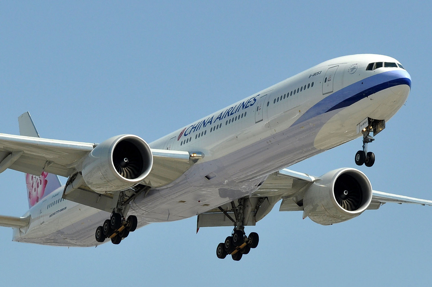Portland - PDX
/Header photo via Pixabay; CC0 license.
Fly over the blue ocean to the Rose City’s “green” terminal!
Despite being one of the smaller cities on the West Coast, there’s always been a consistent demand for good Transpacific service from Portland, driven by its strong corporate presence, medical and educational assets, tourism, and historic Asian immigrant community.
In the 1980s and 1990s, United and Delta pioneered various routes from PDX to Japan, Korea, Taiwan, and Singapore, but the aircraft of the time were too big and expensive to operate, and the carriers couldn’t put enough connecting traffic together to keep the services viable.
In 2004, Northwest connected Portland to its Tokyo-Narita hub using new, more-efficient twin-engine aircraft, and this time the route proved sustainable. After the merger with Delta, the combined carrier now runs the route with 767-300ER equipment, just the right size for the job.
Sustainability is a keyword for the Portland airport, which like the Tokyo service, has prospered by employing its resources smartly. You’ll notice the solar panels, natural-gas-powered buses, light-rail-line, and water-saving toilet handles. You might not see the recycling / composting programs, stormwater management, or wildlife protection efforts. Portland’s “green” reputation is upheld at PDX.
Delta’s link to Tokyo allows for same-day connections on to Shanghai, Singapore, Taipei, and Hong Kong.
Coming home, Delta interlines with Alaska Airlines for domestic connections to the Cascades and California, plus Delta’s own services to the East, South, and Midwest. Alaska Air is by far the largest carrier at PDX; Delta, United, and Southwest are the other dominant carriers. American, Frontier, JetBlue, Spirit, and Hawaiian offer more-limited services.
Customs Arrival
The Narita flight arrives at the end of Concourse D, where you'll be directed downstairs for passport control, baggage retrieval, and inspection. Your flight will be the only one unloading at that time.
If Portland is where you stop flying, you'll walk outside and board a shuttle bus which will take you securely around to the other side of the concourse and drop you off at the downstairs baggage claim area of the main terminal.
If you have connecting flights, check your bags at the airline counter and head back upstairs to Concourse D, where you'll clear security and be able to reach all gates.
Total time to clear Customs, including the shuttle bus ride to the terminal, can take 30-90 minutes. For connecting passengers, this should be ample, since the Narita flight arrives at 9:45 am (Winter 2016 schedule) and its domestic connections mostly departing in the 12:30 - 1:30 pm range.
Click here to open the PDX interactive map (Port of Portland)
Navigating the Airport
PDX uses a sideways-H shaped building, with the main terminal and parking areas in the middle and east side. On the south side are Concourses A (Alaska-Horizon's commuter gates), B (for Alaska Airlines), and the long Concourse C (Alaska, American, Frontier, Southwest, and JetBlue.)
On the north side are Concourses D (Delta, Hawaiian, Spirit, and Virgin America) and E (United and Air Canada.)
There is a connector passageway between the north and south sides so that you do not have to leave the secure zone to make connections. This passageway has moving sidewalks, as do stretches of the C, D, and E concourses. These concourses are noticeably wider than at most airports, so even during busy times you don't feel crushed by the crowd.
The A-gates for Alaska-Horizon are located on the ground level, which you can access by elevator or escalator. These are used by the commuter and regional aircraft heading to places like Medford, Boise, and Spokane. This part of the airport is busy and often crowded, although food and restrooms are convenient. If you’re connecting home on Horizon, finding private space to hold your family and bags will be a challenge.
Family-friendly Amenities and Hidden Gems
Portland offers two different kids' play areas. The larger one, with active-play elements such as a jungle gym, slides, and a lookout tower (with a telescope to view the tarmac), is in the main terminal just outside the security checkpoint for Concourses D-E. There’s a general seating area between it and the main walkway, so you’ll need to watch closely for it.
At the end of Concourse C, there's another, smaller, play area with games, puzzles, video, and plenty of space to relax. It’s conveniently located next to a food court, too, so the parents can have a bite to eat while the kids burn off some energy. Creative Kidstuff has a shop near gate C8 if you need to pick up a few more toys or surprises, and there are several outlets of hometown bookstore Powell’s around the complex, well-stocked with kids’ books and activity materials.
PDX features live music performances year-round and rotating art exhibitions. Portland loves its public sculptures, and there are several here as well that kids are magnetically drawn to. The airport will be opening a free mini-movie theater in Spring 2016 to show short films by local artists and about the region!
If you’re looking for a quiet spot, head for the halfway point on the concourse connector, where there are cushy seats, a great view of the tarmac and mountains, some open space and not that much foot traffic.
Restrooms
Airports in the Pacific Northwest have good-quality restrooms, and Portland is no exception. Stalls in men’s and women’s restrooms are ample and include a fold-down shelf to set a small bag on. Lighting is adequate and the toilets and sinks are in very good condition. The toilets are equipped with dual-flush handles (up for #1, down for #2.) Restrooms are cleaned frequently and are well-maintained.
Specific family restrooms are located near gates A2, C3, and D1 (especially good for maneuvering strollers); however, general restrooms are located every few gates.
Food and Shopping
PDX presents an abundance of food and shopping choices both inside and outside the security zone. In the central building (outside security) the Oregon Market houses 25 food and merchandise vendors, including an outpost of hometown brand Nike. Inside the secure zone, there is a smaller court halfway along Concourse D, and two courts along Concourse C, incorporating a creative mix of national and local brands, so while you can get your fix of Starbucks or Wendy’s, you can also try something from the Flying Elephants Deli, Pizza Schmizza, or the Coffee People. Finally, additional shops and restaurants are scattered among the concourses outside of the food courts.
Connectivity
WiFi is available in all the gate areas and is free.
Portland's MAX light rail serves PDX with the Red Line, linking it southwest to Chinatown in less than 35 minutes and Downtown in under 40. Connections to the Blue and Green Lines are available at the Gateway transit center, less than 15 minutes from the terminal, allowing fast access to neighborhoods to the south and east of the airport.
















































